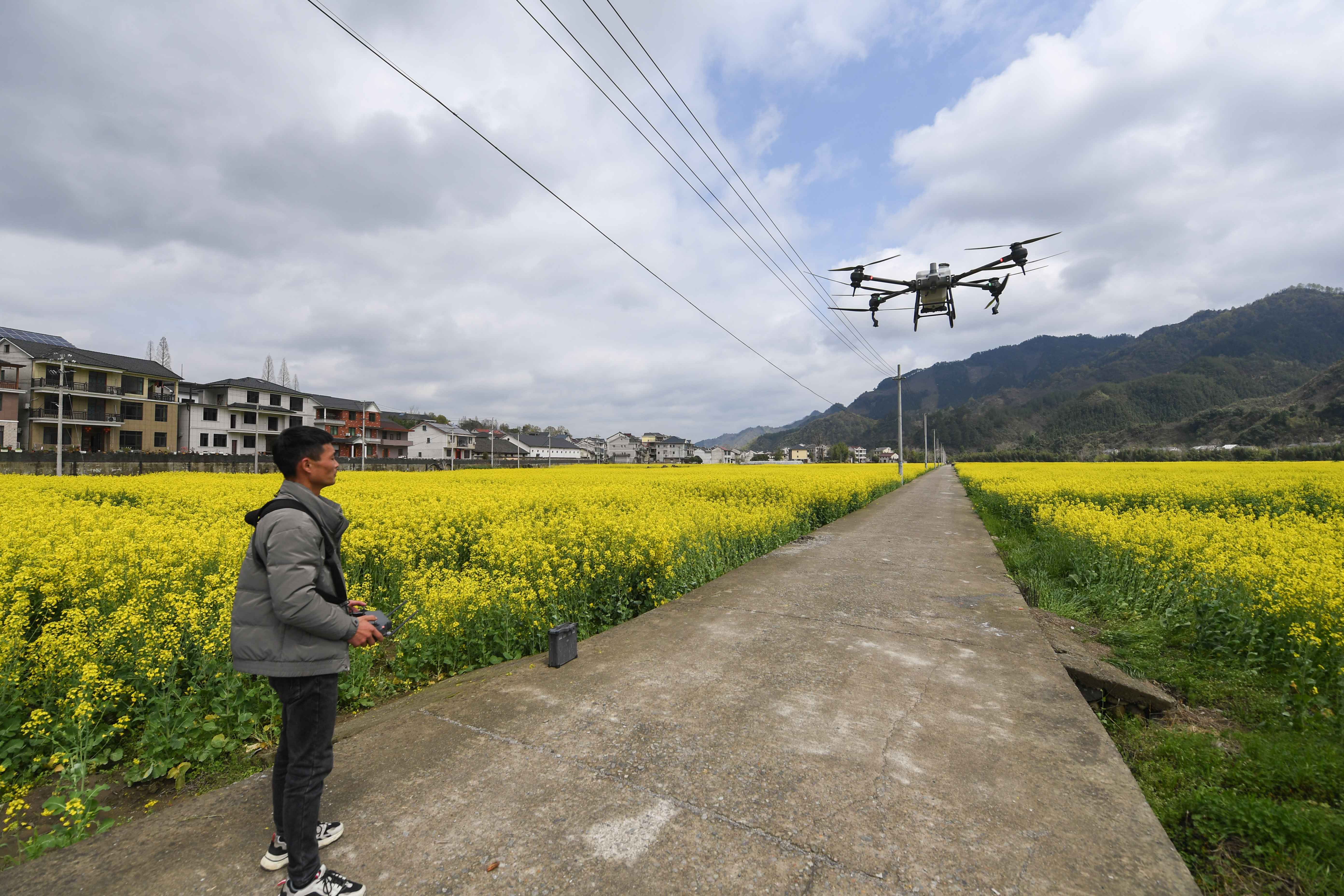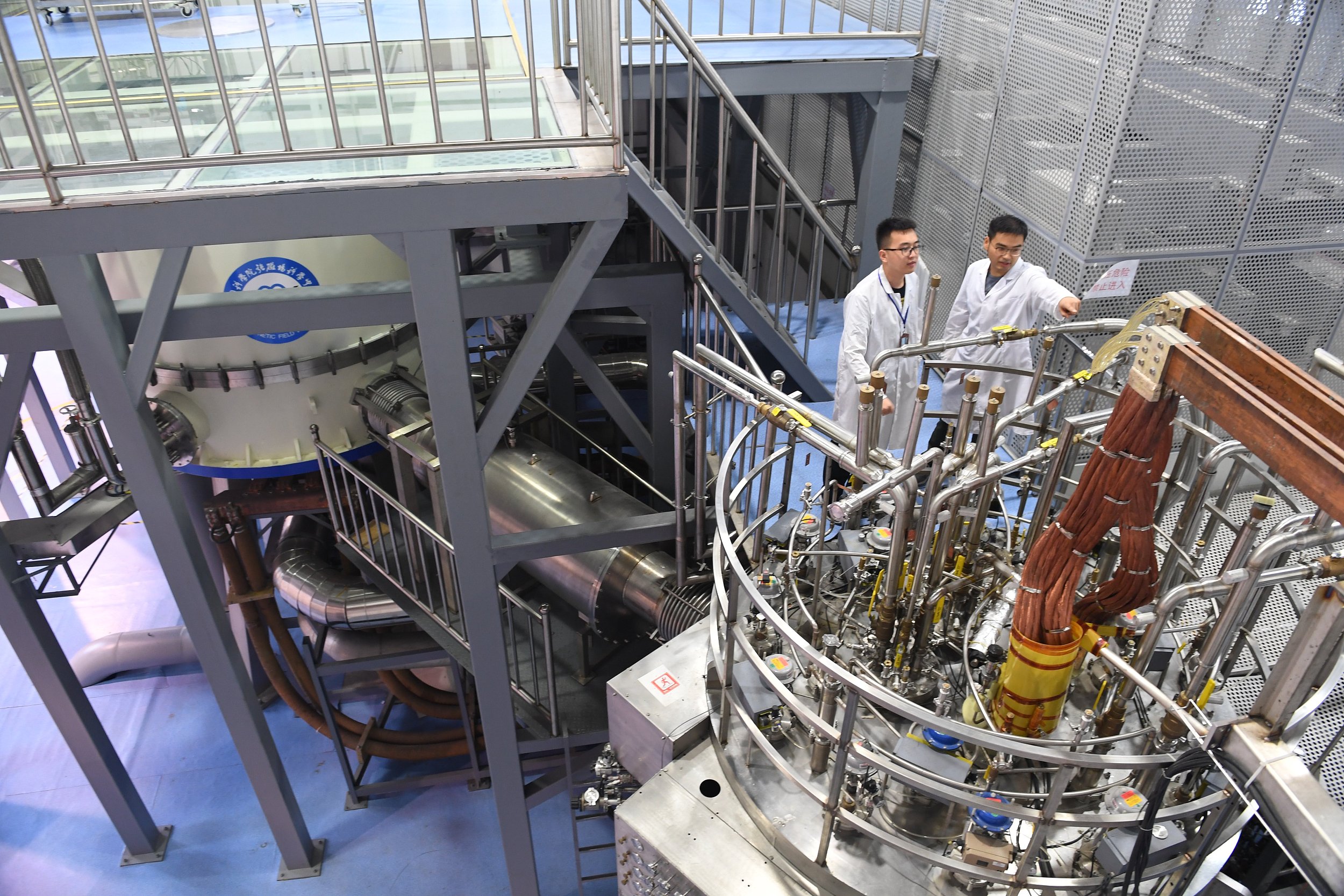Digi-tech, Better Village Life
A farmer is fertilizing the oilseed rape using a drone in a village in Hangzhou, east China's Zhejiang province. (PHOTO: XINHUA)
By LU Zijian
Rising from 27.2 trillion RMB in 2017 to 45.5 trillion RMB in 2021, the scale of China's digital economy is now ranked second in the world, recording a compound annual growth rate of 13.6 percent, according to the Digital China Development Report (2021) released at the opening ceremony of the 5th Digital China Summit on July 23.
Digitizing villages, as an important part of rural revitalization, also shared in the growth and progress of the digital economy as a whole.
Making farming easier and more effective
Solving problems occurring in agricultural production is key to the construction of digital villages. With abundant application scenarios, digital technologies have been actively integrated into modern agriculture in China.
In Dayi county, southwest China's Sichuan province, 13 digital farms have been built through harnessing technologies like multispectral imaging, near ground remote sensing and crop modeling, while creating an Internet of Things (IoT) network to collect data on farmland resources and the environment.
Such digital governance of farmland could provide services like quick data monitoring and warning of water use efficiency and soil fertility, meteorological disasters, diseases and pests, and growth and yield. Decisions regarding environment control and accurate application of water, fertilizer and medicine can also get insights from such governance.
Digital technologies also greatly relieved farmers' pressure by offering unmanned intelligent machines. Qinglong, a small village surrounded by mountains, located in southwest China's Chongqing, has made villagers' work easier and more effective due to adopting a variety of smart agricultural equipment.
Self -developed unmanned target spraying machines, unmanned weeding machines, and orange picking robots were adopted in local orchards, which could help farmers collect production data, make in time action on field management, and facilitate the production and management of an unmanned orchards.
Rural e-commerce on track
New business formats emerged with digital technologies gradually integrating into the rural economy. Rural e -commerce is one worth noting.
Online retail sales in China's rural areas reached 2.05 trillion RMB in 2021, increasing by 11.3 percent year-on-year, and the online retail sales of agricultural products hit 422.1 billion RMB, with an increase of 2.8 percent compared with that of last year, according to the Ministry of Commerce.
"Thanks to e-commerce, which now develops as fast as a high-speed train, our apples connect with customers directly. We sell more apples and we sell faster," said Zhou Jie, head of a fruit company in north China's Shanxi province.
In southeast China's Fujian province, there were 130,000 livestream activities held to sell agricultural products in 2021, with the online retail sales of agricultural products in Fujian reaching 35.71 billion RMB.
Rural tourism also benefited from digital technologies. The Huacheng town in south China's Guangdong province has successfully grown its advantages in culture and history, and boosted the local tourism industry via digital technologies.
With the mini program "Digital Huacheng" on Wechat, tourists can learn about the Li Weiguang, who lived in the area and was a champion of civil service examinations in the Qing Dynasty, via virtual reality. They can also buy tickets, check available parking lots and search for restaurants through the mini program.
Making rural life more convenient
Digital technologies also make daily life in rural areas more convenient.
"Previously, I had to commute back and forth to the office building of the village committee to get things done, but now I only need to scan the QR code on the online service platform via smart phone. It is much more convenient," said a villager in Yangquan, north China's Shanxi province.
Developed by China Telecom, the platform is a comprehensive information service system, integrating multiple scenarios, including village governance and villager services. The platform has to date been adopted in more than 48,000 villages of 28 provinces all over the country.
Such convenience cannot be realized without the greatly improved digital infrastructure in rural areas. By the end of November 2021, all administrative villages in China had been connected to broadband Internet services. Through an optical fiber network, the average download rate in rural areas exceeds 100Mb per second, almost on par with urban areas.
IoT sensors were also installed in demonstration zones in rural areas to offer warning information, so as to timely respond to natural disasters, accidents, and public health and security emergencies.
Together with nine other departments, in January the Cyberspace Administration of China issued an action plan for the development of digital villages between 2022 and 2025. Even greater progress in digital village development is yet expected.



